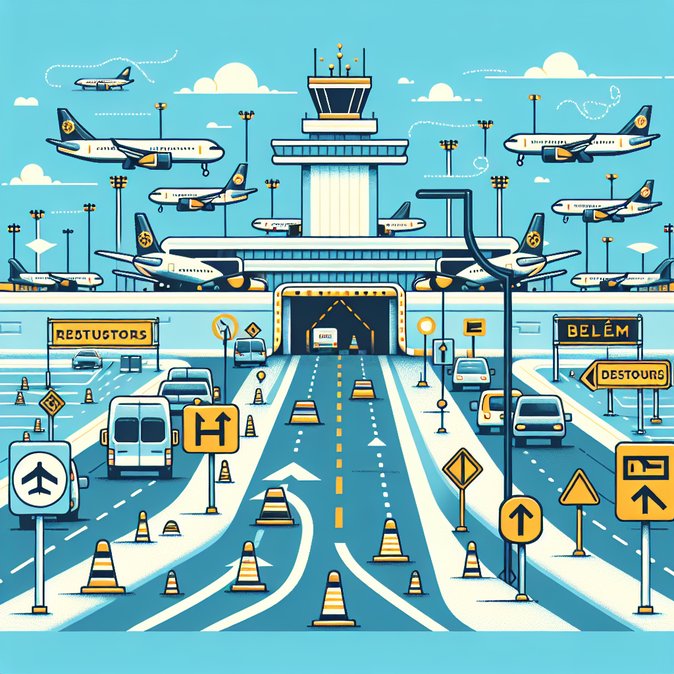
Trip-support advisories published on 13 November reiterate that temporary air-navigation measures and city-wide traffic cordons linked to COP30 will stay active in Belém through the close of negotiations on 21 November. The Brazilian air-navigation authority CGNA has designated Val-de-Cans Airport (SBBE) a coordinated aerodrome, requiring prior-permission requests for business aviation and limiting parking stands. Pilots must also observe layered no-fly zones centred on Parque da Cidade, with COMAE empowered to suspend flights during VIP movements or security incidents.
On the ground, municipal decrees enforce rolling closures and one-way schemes around the venue and key hotel corridors, with ride-hail and taxi access filtered through perimeter checkpoints. Local bus routes have been diverted, and traffic police are issuing R$ 293 fines for unauthorised vehicles entering restricted lanes.
![COP30 airspace restrictions and traffic cordons remain in force until 21 November]()
The restrictions coincide with Brazil’s decision to issue free electronic visit visas for accredited COP30 delegates, a policy that has seen more than 32 000 e-Visas approved since applications opened on 1 September. While the visa facilitation has smoothed arrivals, congestion at immigration counters remains moderate, averaging 35 minutes according to Ministry of Tourism data.
Aviation analysts say the airspace regime is similar to that used during the Rio 2016 Olympics but covers a wider area of Amazon FIR, reflecting both security sensitivities and limited alternate airports. Carriers have padded schedules by 10–15 minutes, and cargo charters moving climate-tech exhibits are advised to confirm slot allocations at least 48 hours in advance.
Mobility planners should circulate the latest NOTAMs, ensure drivers have printed diversion maps, and brief travellers on acceptable ID documents at police checkpoints. The measures will scale down gradually after dignitaries depart on 21 November, but some lane restrictions may persist until all temporary structures are removed.
On the ground, municipal decrees enforce rolling closures and one-way schemes around the venue and key hotel corridors, with ride-hail and taxi access filtered through perimeter checkpoints. Local bus routes have been diverted, and traffic police are issuing R$ 293 fines for unauthorised vehicles entering restricted lanes.

The restrictions coincide with Brazil’s decision to issue free electronic visit visas for accredited COP30 delegates, a policy that has seen more than 32 000 e-Visas approved since applications opened on 1 September. While the visa facilitation has smoothed arrivals, congestion at immigration counters remains moderate, averaging 35 minutes according to Ministry of Tourism data.
Aviation analysts say the airspace regime is similar to that used during the Rio 2016 Olympics but covers a wider area of Amazon FIR, reflecting both security sensitivities and limited alternate airports. Carriers have padded schedules by 10–15 minutes, and cargo charters moving climate-tech exhibits are advised to confirm slot allocations at least 48 hours in advance.
Mobility planners should circulate the latest NOTAMs, ensure drivers have printed diversion maps, and brief travellers on acceptable ID documents at police checkpoints. The measures will scale down gradually after dignitaries depart on 21 November, but some lane restrictions may persist until all temporary structures are removed.





